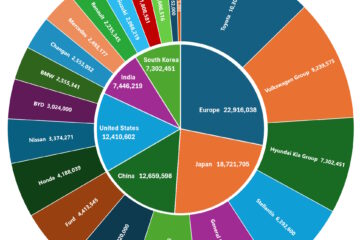 It is well established that even well intentioned government intervention in industry very often ends up causing more problems than it solves. Today one of the issues facing the United States is a loss of jobs in the steel industry and so President Trump claimed this is a National Security Issue and so used his unilateral power to impose a 25% tariff on imports of steel into the United States.
It is well established that even well intentioned government intervention in industry very often ends up causing more problems than it solves. Today one of the issues facing the United States is a loss of jobs in the steel industry and so President Trump claimed this is a National Security Issue and so used his unilateral power to impose a 25% tariff on imports of steel into the United States.
On its face, this seems like a good idea. Simplistically, if decrease the ability of other countries to export their steel to the US will result in the creation of more US steel jobs. However, the world is not a simple place and what actually happened was:
- Few new US steel jobs were (or will be) created as steel foundries take time to expand and most of that expansion will be done with… wait for it… automation, not direct jobs
- The cost of goods produced in the US has to go up to accommodate that tariff. That is a particularly ugly reality for US consumers that like things made with lots of steel, like cars
- The US has trade agreements with many friendly countries like Canada, Japan and others that preclude such tariffs but cause diplomatic problems as exceptions are carved out
- Other industries then get in-line for their protection package causing a never ending tide of companies looking for their handout
- Some important civic projects like steel intensive bridges have their costs increase or projects delayed so long (because engineers now spec required US steel that is back-ordered) that they are cancelled outright or don’t get completed in a timely fashion.
The five points above are well documented oft discussed in the media. The video below however, points out two fascinating unintended consequences that we had not thought of:
- The tariff on steel is so drastic that more than one non-partisan organization has calculated that the cost of bringing back a single US steel job COSTS between 6 and 8 people in other industries their jobs
- Companies that would have imported steel and then made finished products for consumer sale in the US, now find it notably less expensive to use that steel in other countries to produce finished goods and then import them without any tariffs.
One example of how those 8 American jobs that will go away are US jobs converting imported raw slab steel into a different form of steel that the domestic industry can use. The video below exposes the case of NLMK Steel which has several foundries but just cannot produce enough steel for the US market so it has a factory in Illinois that exclusively preps foreign steel into usable rolled steel for the US industry. This plant will likely turn to layoffs as a direct result of this tariff:
https://youtu.be/WUBUq7vftOY
On a broader note, it is important to realize that it is politically expedient to blame other countries for job losses in the steel industry but the truth is far more simple. It is true that other countries now produce vast amounts of steel, but it is also true that the United States is producing as much steel today as it was in the 1980’s. If that is the case and that jobs did not go “overseas” where did the go. There is a one word answer for that: automation.
In June 2016 then President Obama said:
“This nostalgia about an era when everybody was working in manufacturing jobs, and you didn’t need a college degree, and you could go in and as long as you worked hard you could support a family and live a middle-class life — that has been undermined far more by automation than it has been by outsourcing or the shift of jobs to … low-wage countries,” Obama said. “I mean, the steel industry is producing as much steel in the United States as it ever was. It’s just (that) it needs one-tenth of the workers that it used to.”
Obama’s numbers are not accurate but the sentiment is. The facts are that employment in the steel industry is 20% of its peak from the 1950’s (yes, that means 80% of the steel jobs are gone) while the US produces 30% less steel than its peak in 1973, but about the same as it was in the 1980’s.
The steel industry was an unsafe world for workers and unions were successful in driving up the wages. The increased labour input cost combined with the fact that the work really was dangerous meant that employers sought out new technologies to reduce cost and improve safety.
In the end these government interventions in the market usually cost jobs, decrease the standard of living, cost tax payers money and perhaps most important of all, take mindspace from the leaders and legislators from the real pressing issues of the day.



1 Comment
Anonymous · January 10, 2020 at 1:35 pm
Everything is very open with a clear explanation of the challenges.
It was really informative. Your website is very useful.
Thanks for sharing!